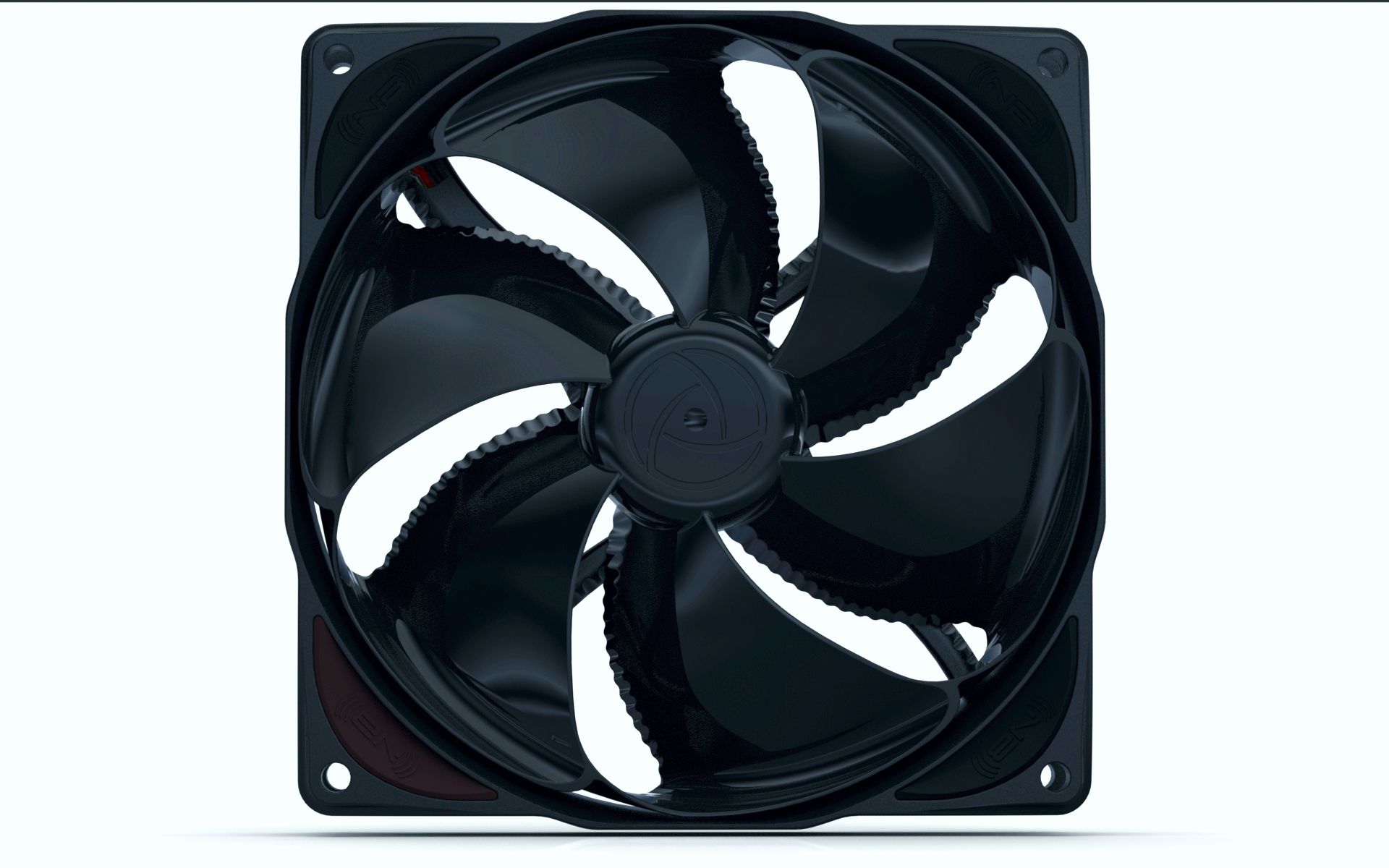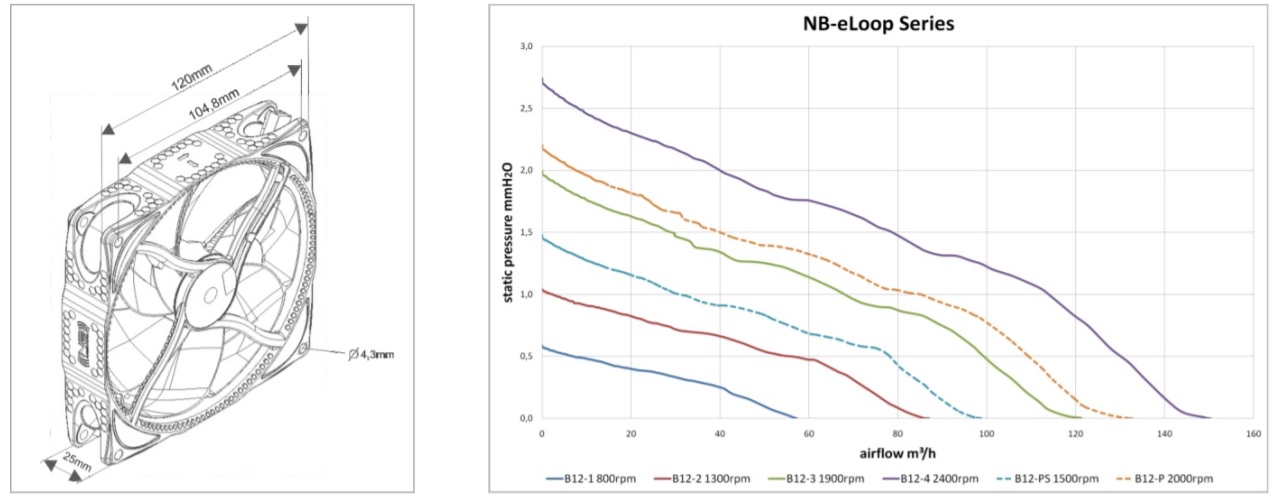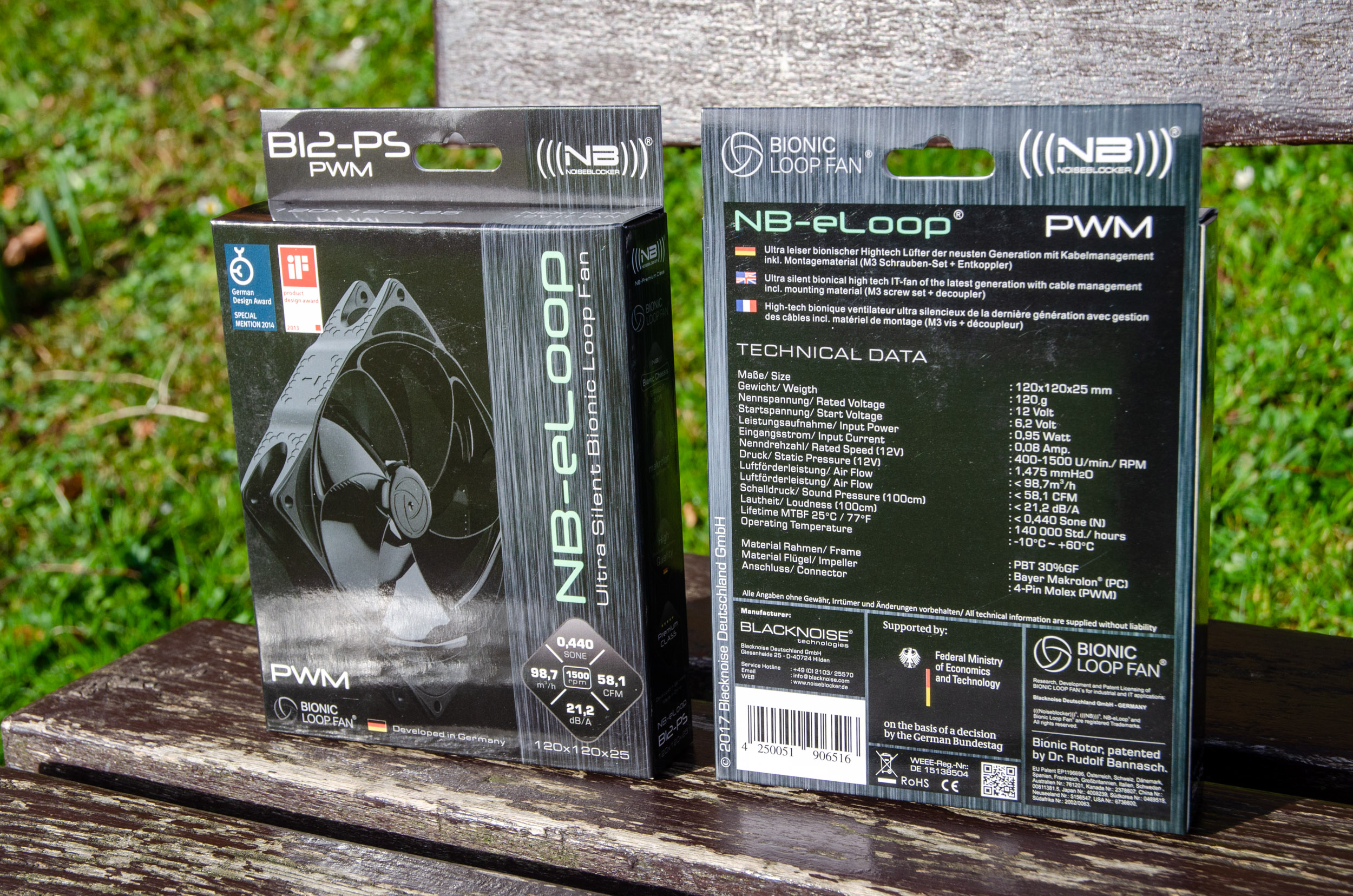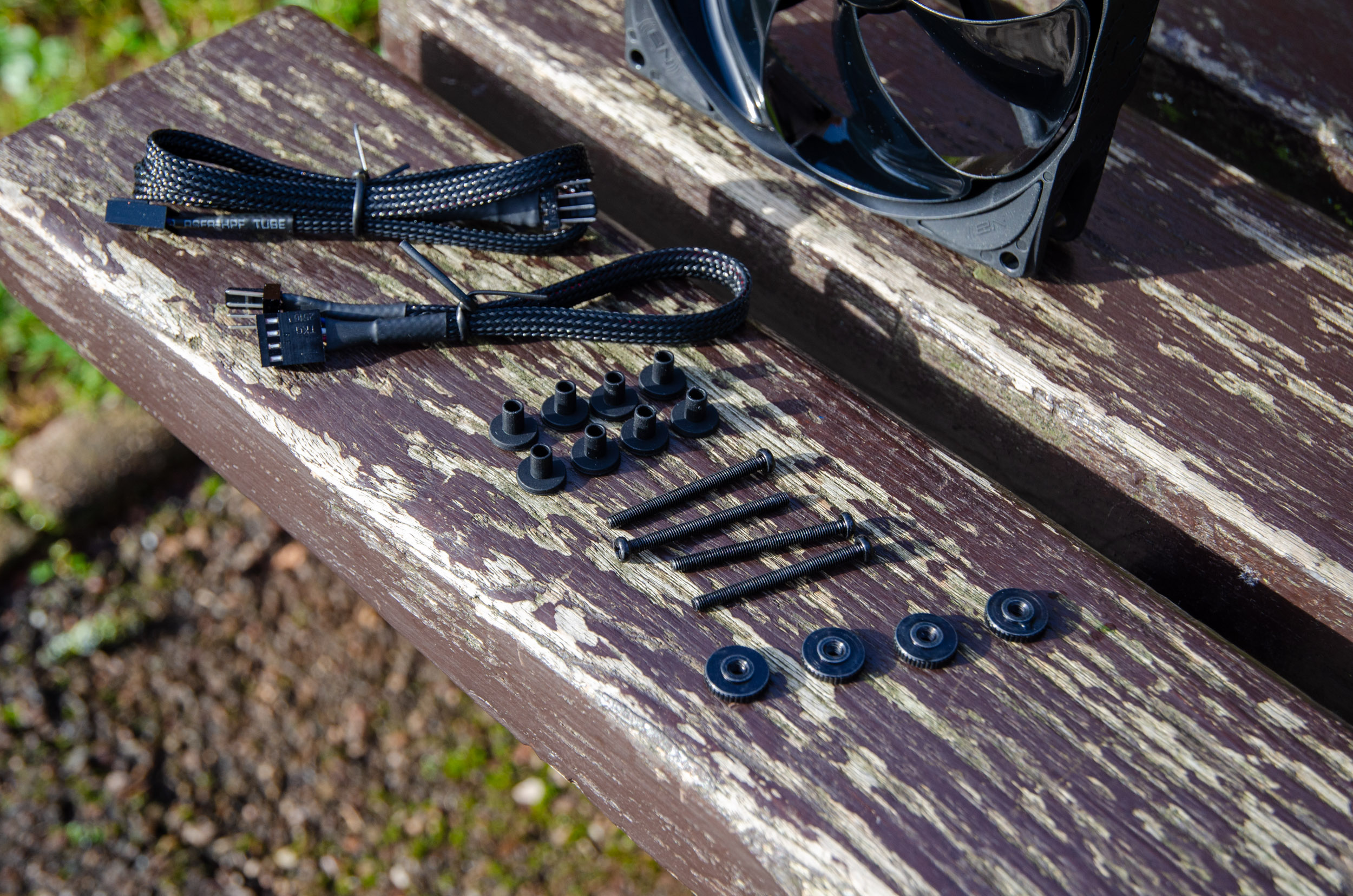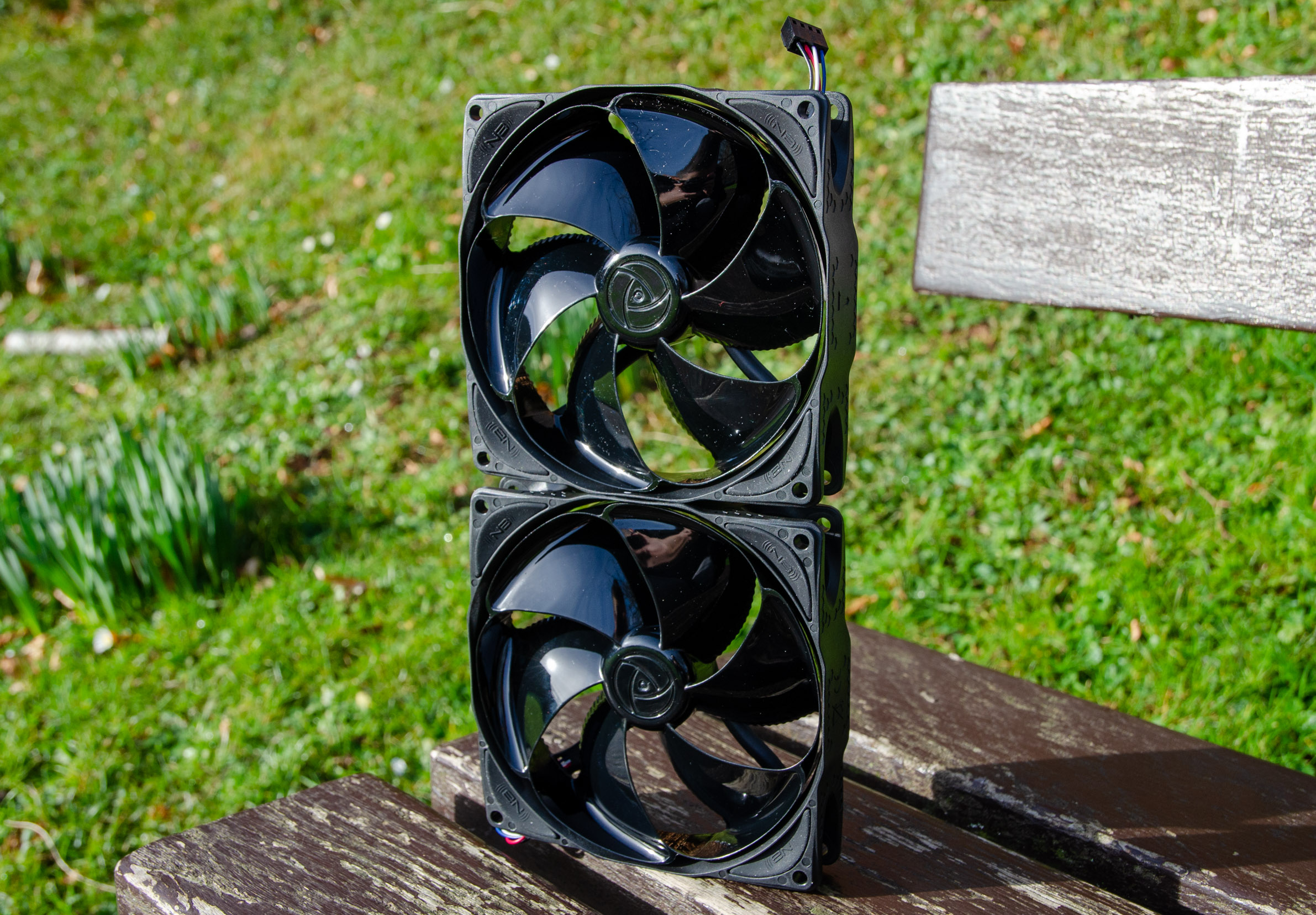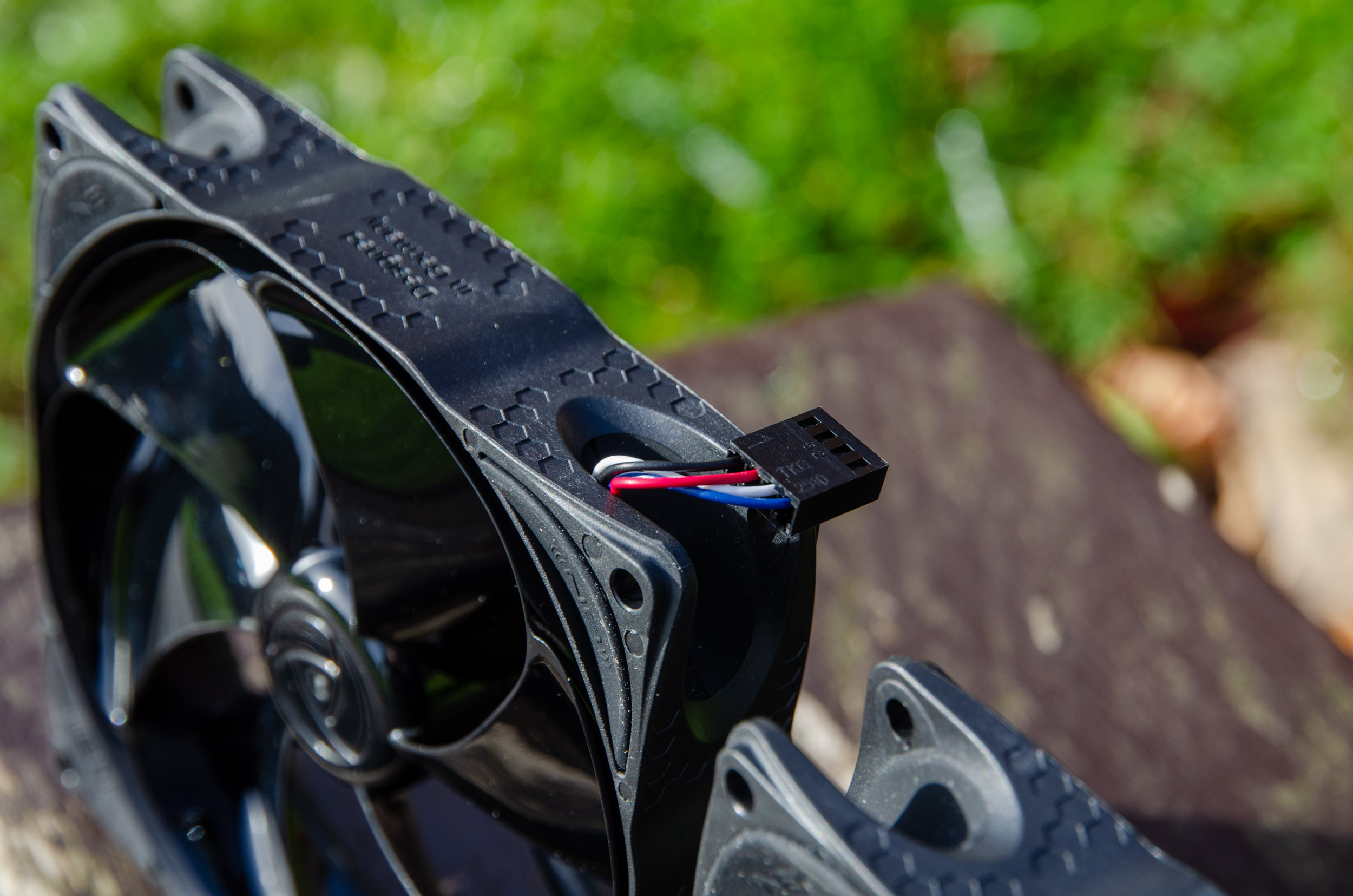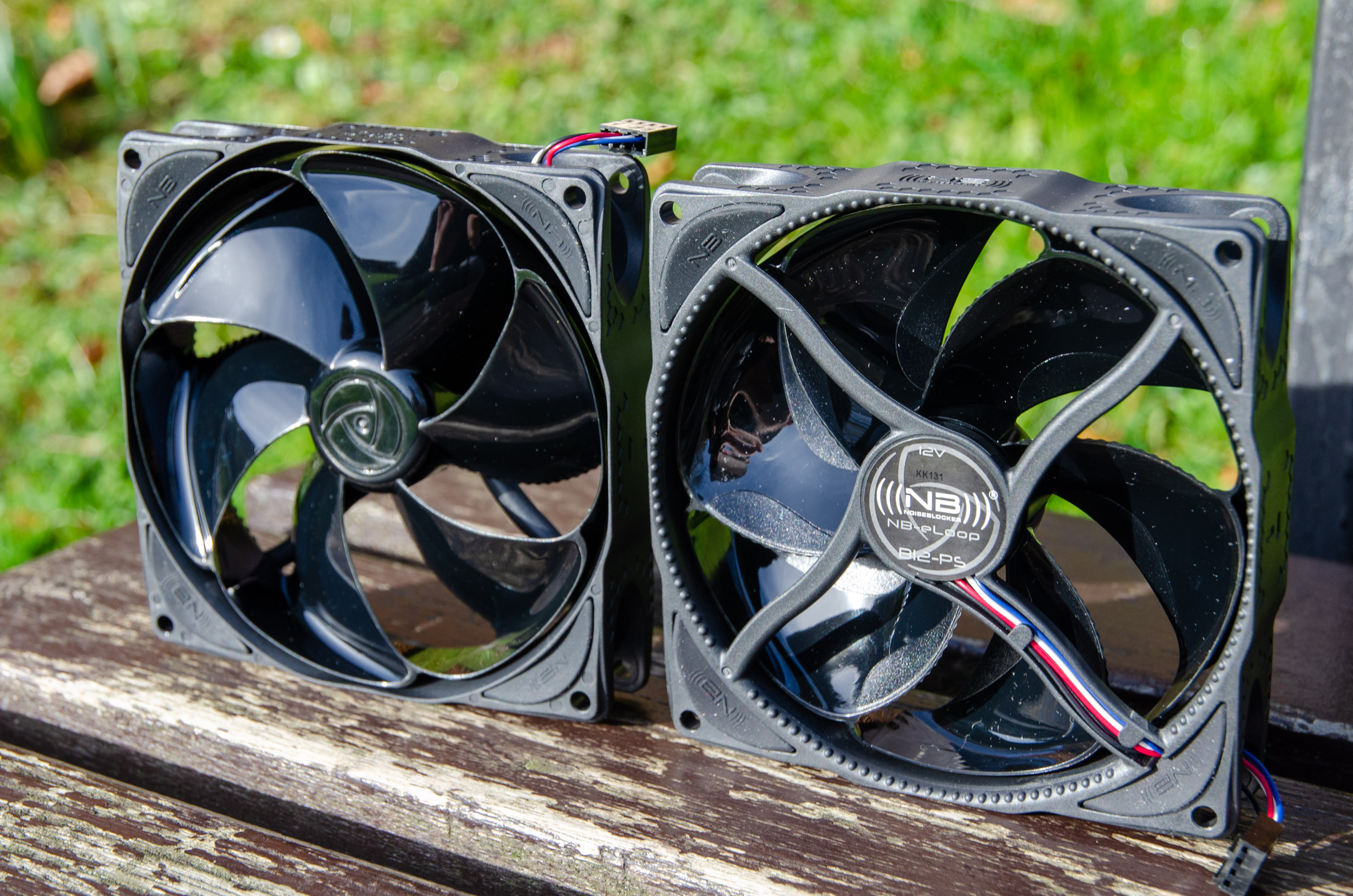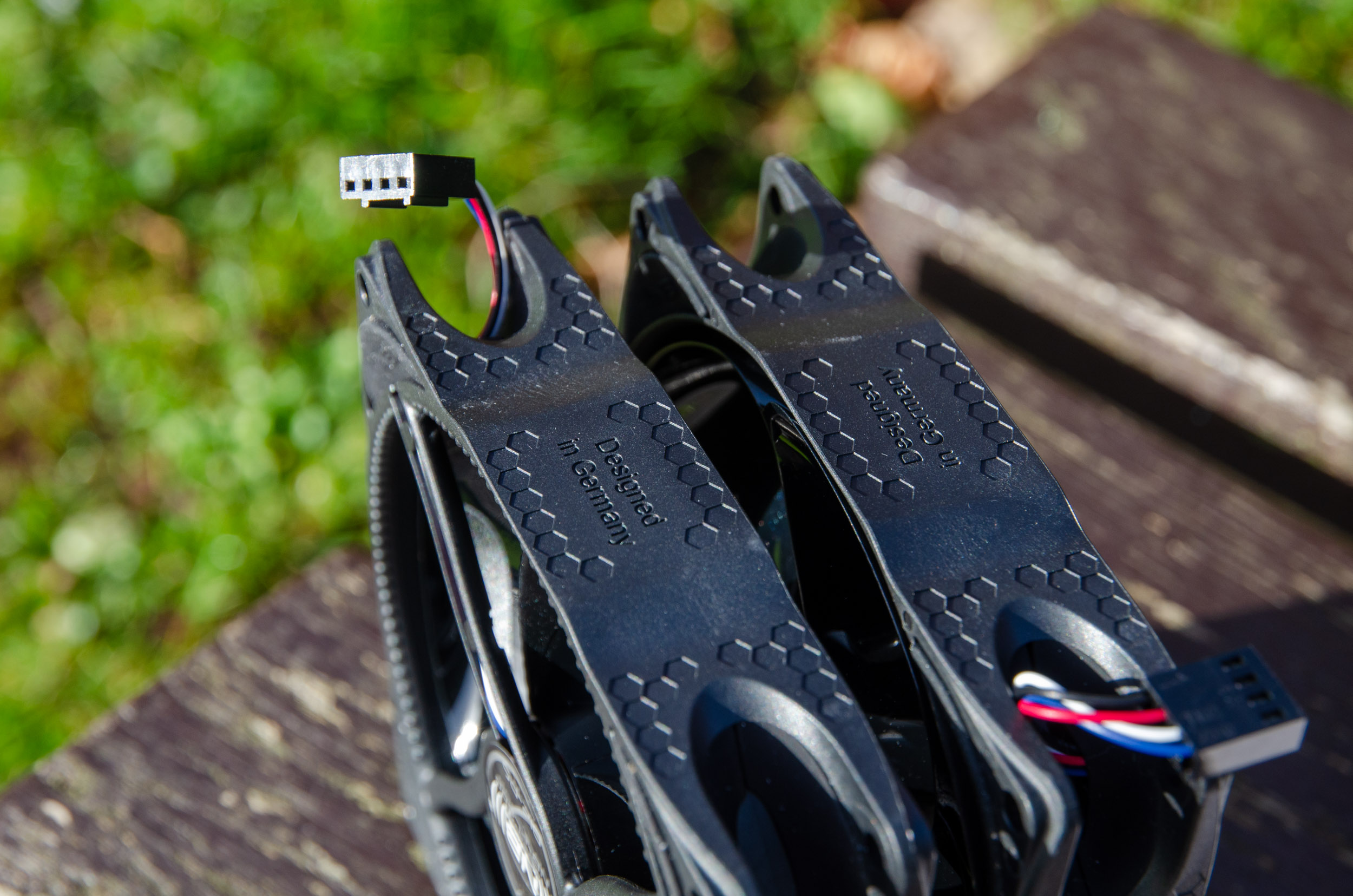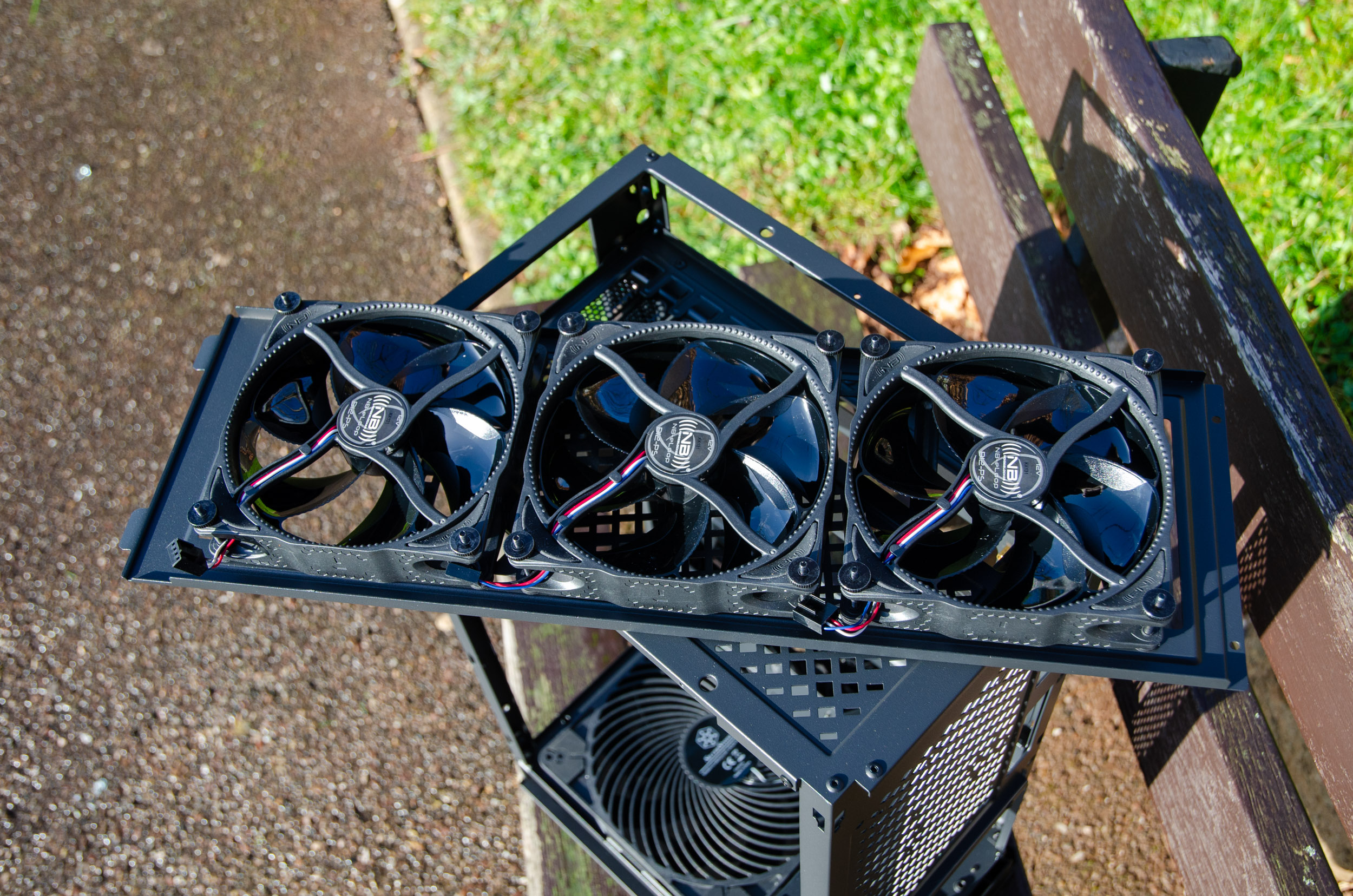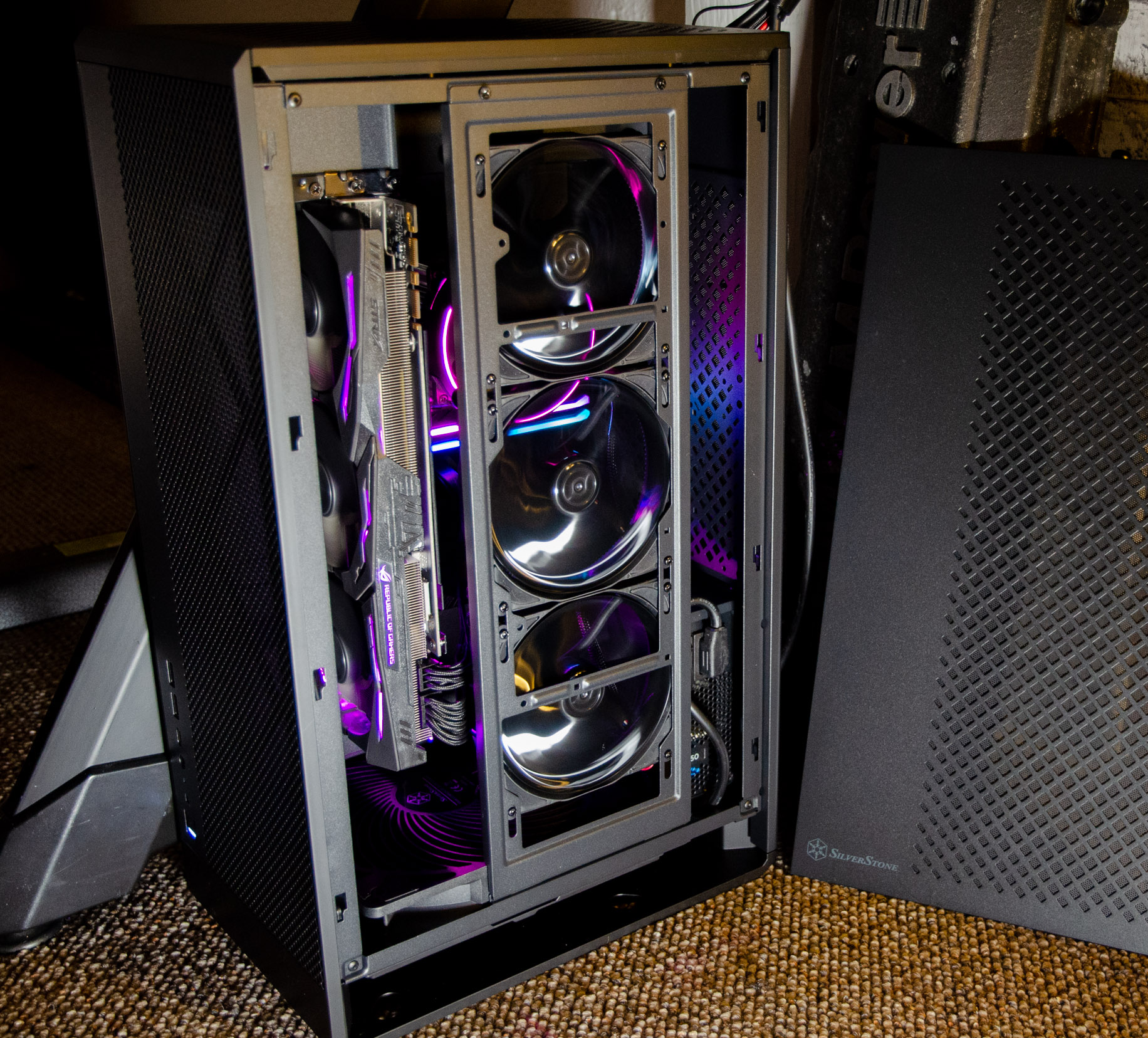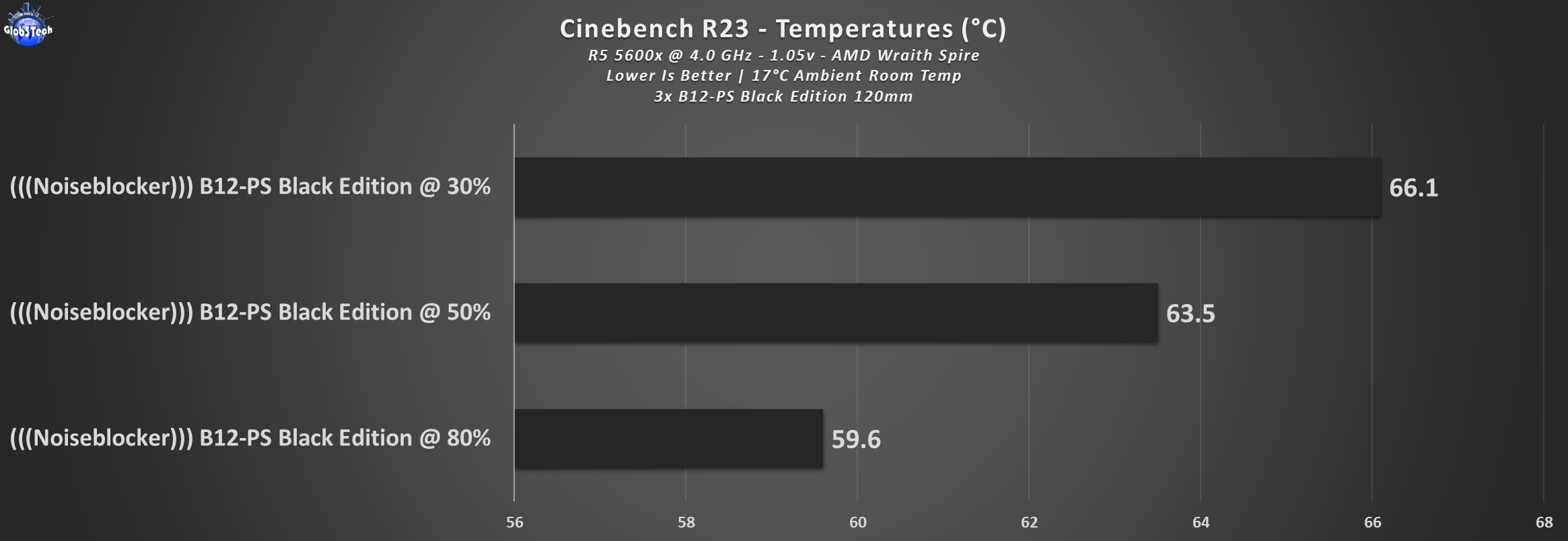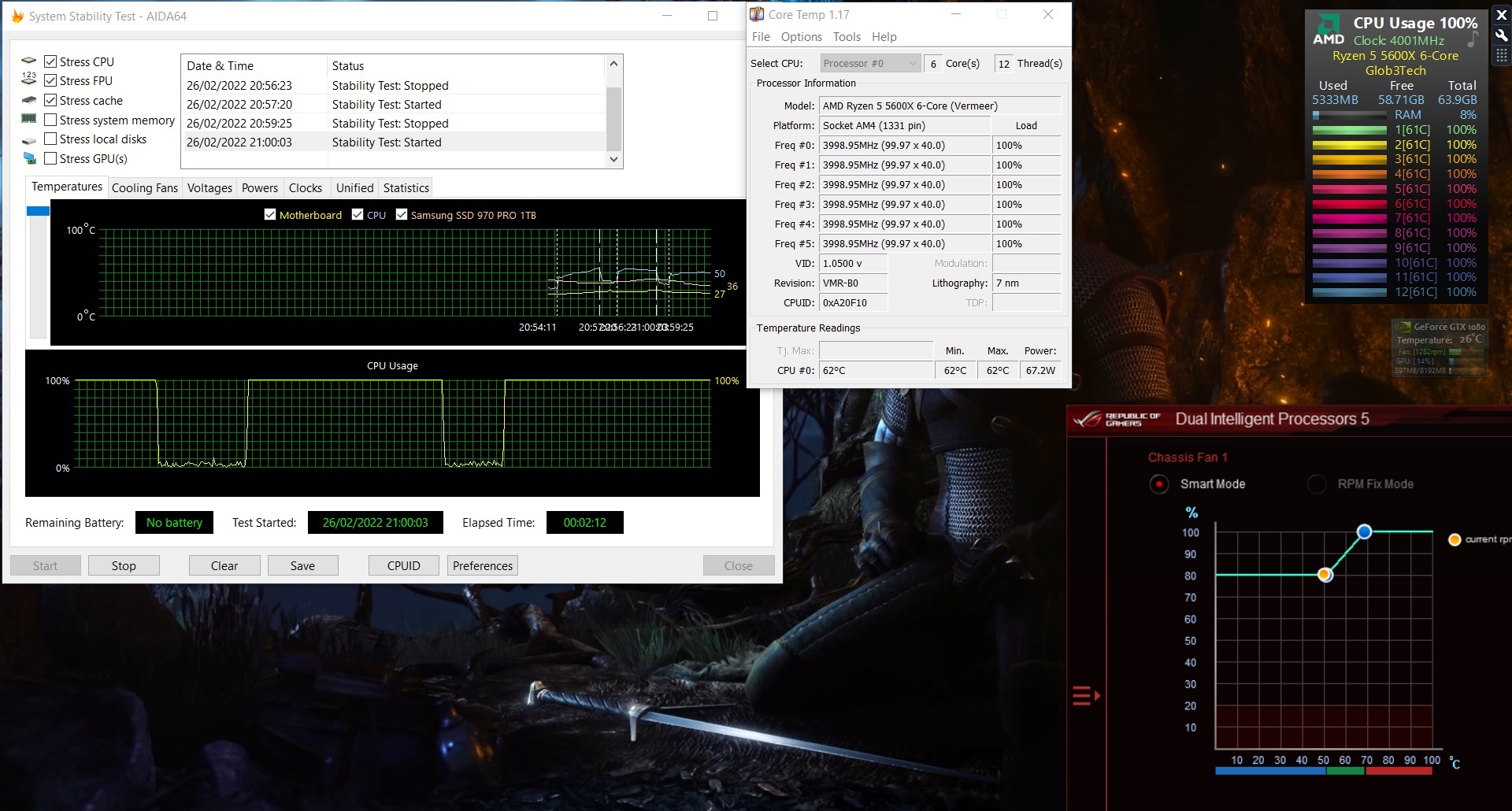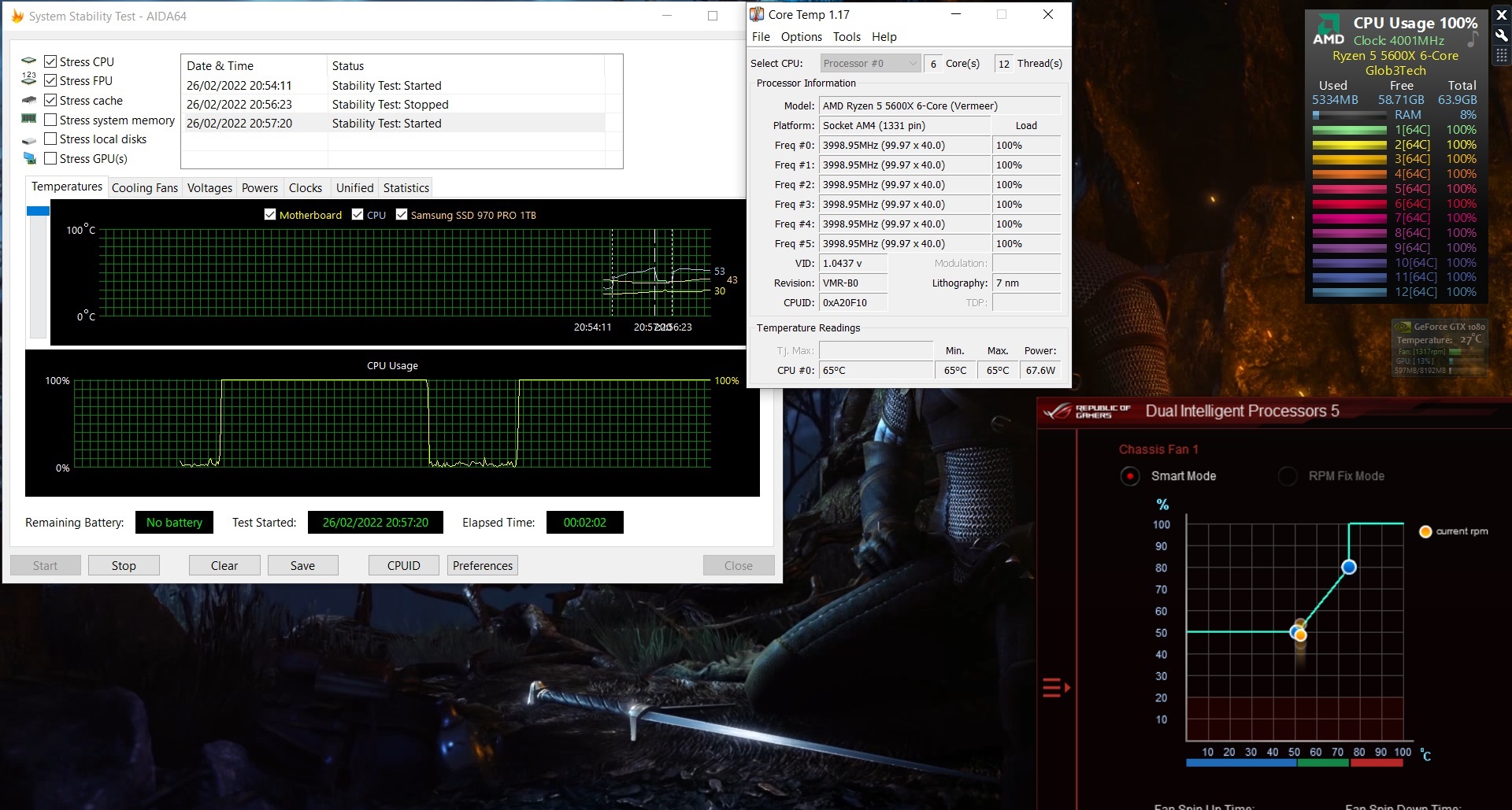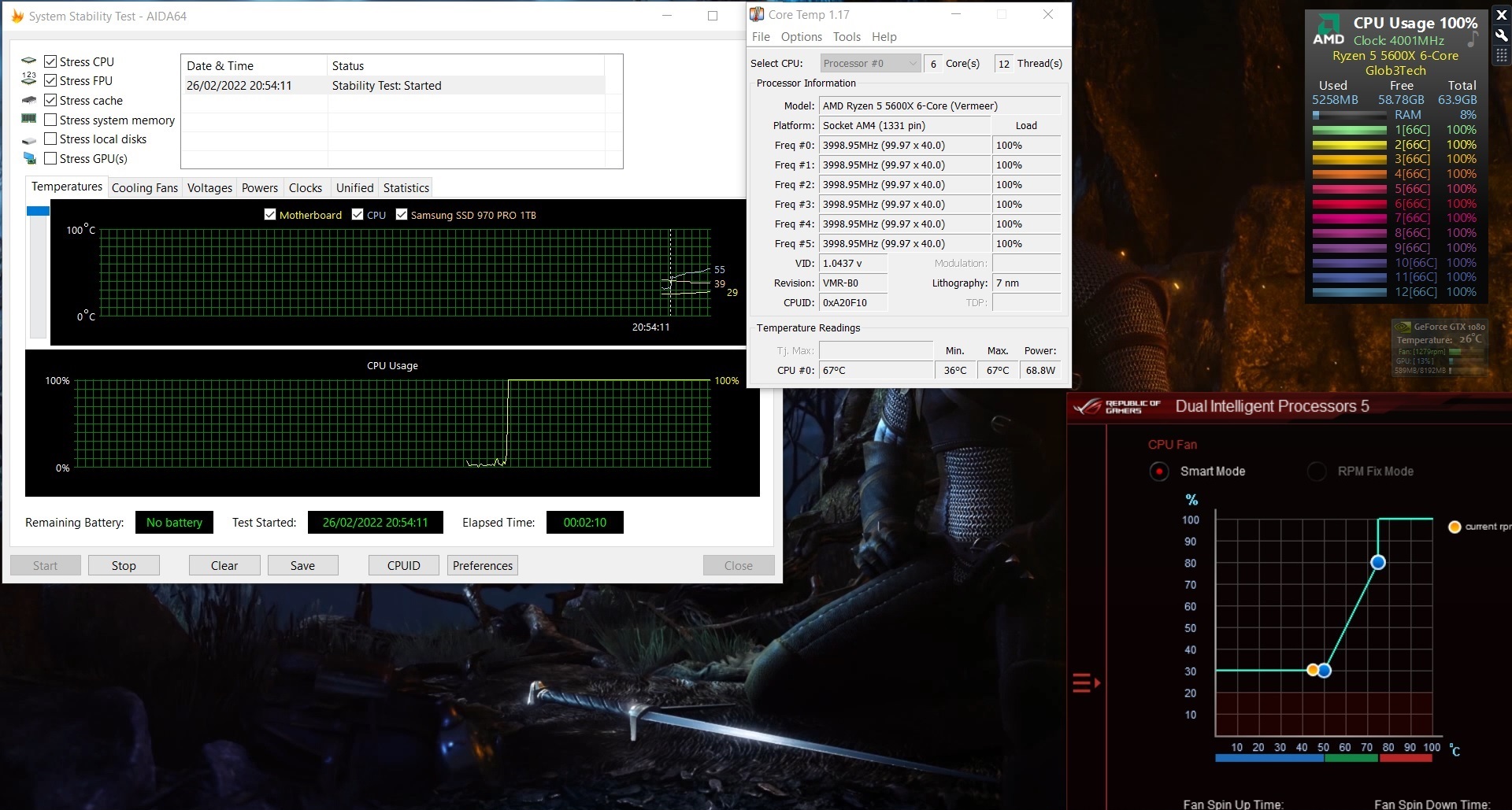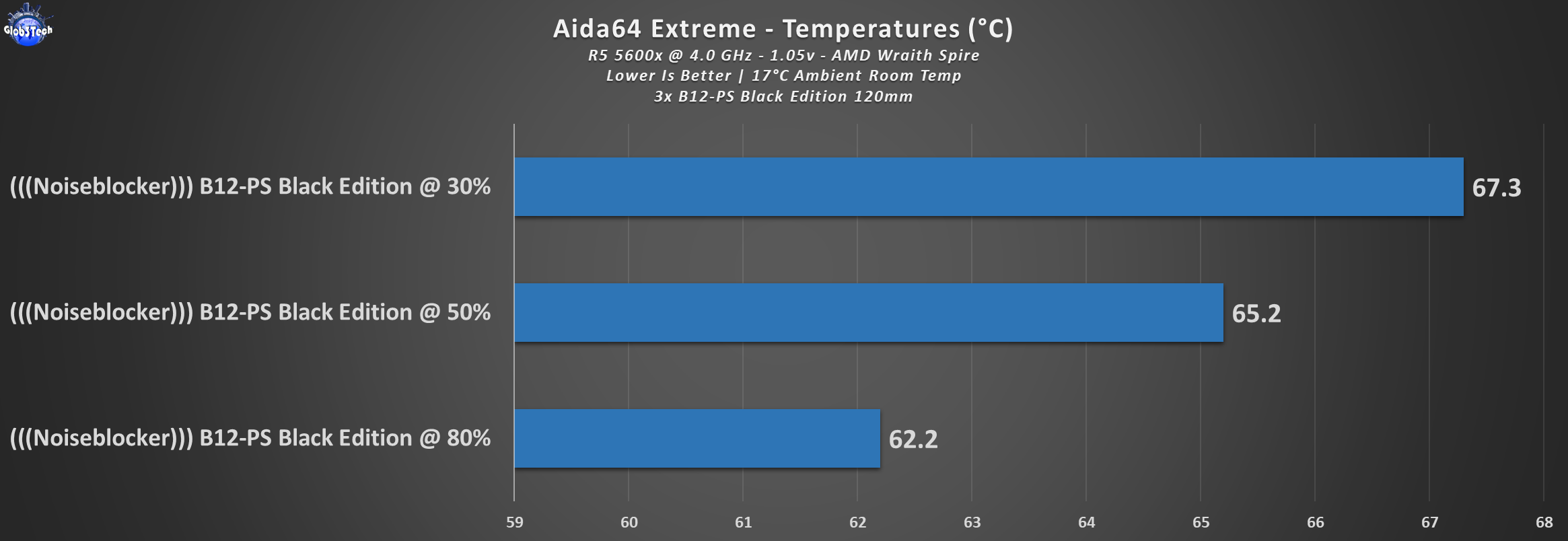
These are by now such an easy fan model to recognize thanks to the intensive development that Noiseblocker did with this Bionic eLoop series, where more than ever, form follows function. With so many patents and innovative specs under their belt, now you can have them in an all black paintjob.
First about Noiseblocker:
(((Noiseblocker))) is a trademark of the Blacknoise group.
Blacknoise Deutschland GmbH is focused on the development and production of high-quality product solutions in computer Hardware, multimedia accessories and they also produce industrial grade fans.
Founded in 1998, they are the European leader in the low-noise PC arena - particularly through their Noiseblocker brand - and have become a mature, economically stable company.
Thus, they have branches worldwide in over 33 countries.
Their success is based on innovative product development, quality assurance and not only their global reach, but their ability to think flexibly and are very proud of their products, patented technologies and testing methodology like low-noise development, Low-dB-measuring chamber, fast prototyping, CAD construction, fan-characteristic curve-testing bench-measurement and acoustic-camera-visualization engineered at the limits of audibility.
Pricing and availability
While the standard NB-eLoop Bionic series comes in a variety of specs, in either 120 or 140mm frame sizes, the Black Edition can only be had in the “PS” PWM trim.
*15.03.2022 - Video review is live as well!*
Presentation and specification
*Courtesy of their website.*
Packaging and Visual Examination
The overall packaging theme and design are the same as seen in the past, with excellent branding and detailed specs.
Regarding the included accessories, each fan comes with two fully braided modular cables of different lengths (20 & 50mm) and the mounting hardware which consists of 8x anti-vibration rubber plugs/sleeves and 4x long Philips screws.
As for the 120mm PWM fans, they are identical in specs and performance with the previous white-bladed brothers. The same continuous blade design is incorporated, which now has a glossy all black finish. The frame is made from PBT 30% (Polybutylene Terephthalate – which is reinforced fiberglass) while the impellers are made from polycarbonate plastic resins called Makrolon (think of Lexan since). This combination ensures a tough but light casing for the fans to last as long as possible.
Zooming in on the corners, the fans use the same rubber pads to reduce vibration, also in matching black (vs grey for the standard ones). We also notice the 4-pin plug where the extension cable(s) will connect.
The same 6 blades have a portion on each of them on the exhaust side to improve turbulence and airflow. As for the rotors, they use their own position-invariant magnetic bearing NB-NanoSLI® Gen 2 which are also dust-resistant. All of this let’s them to operate in a range between 400 and 1500 rpm which can produce a static pressure of up to 1.475 mm H2O and 98.7 m³/h of airflow while not going over 21.2 dB (A). They are backed by a 6 years warranty and over 140,000 hours of continuous operation.
The attention to details is fantastic, check out this honeycomb pattern cut-outs on the frames.
As you can see, the included screws are long enough for a variety of cases and applications.
Given their overall theme and design, they should match perfectly with a stealthier build.
Testing methodology
- The (((Noiseblocker))) fans will run at 30, 50 and 80% RPM points to record the CPU temperatures via onboard software
- The (((Noiseblocker))) fans will be used primarily as case fans for extra airflow since they carry identical specs to the previously reviewed, this a great opportunity to test them in a different scenario. Also we attached all of the fans to a SATA powered PWM fan controller that in turn was connected to the motherboard’s chassis fan header, thus all the fans are getting an identical signal
- The Ryzen 5 5600x will be tested at 4.0 GHz @ 1.05v as the baseline parameter since in stock form, the results are highly inconsistent dues to the board’s BIOS pumping inconsistent voltage values. Also the stock AMD cooler is set at 60% RPM to eliminate another variable
- As the main torture test, we will employ a 2 minute run in AIDA64
- Room temperature was recorded at ~17°C
- For the noise testing, we used our Pyle PSPL01 placed 30 cm away from the setup - all other fans will will be off or set at minimum RPM
- Thermal paste used Noctua NH-H2
- Any results over 90°C in any condition are considered a fail
Hardware used:
- CPU: AMD Ryzen 5 5600x @ 4.0 GHz/1.05v
- CPU Cooler: AMD Wraith Spire RGB
- Motherboard: ASUS ROG STRIX B550-i Gaming mITX @ BIOS 2407
- RAM: 64GB Neo Forza MARS RGB 3200 MHz CL16
- Boot SSD: Samung 970 PRO 1TB M.2 Gen3x4 MLC PCIe NVMe 1.3
- Video card: ASUS GTX 1080 STRIX A8G
- PSU: Corsair SF750 SFX Platinum
- Case: SilverStone ALTA G1M Micro-ATX Super Tower
Software:
- OS: Windows 10 Pro x64 Version 21H1
- NVIDIA Drivers - 511.79
- CPU-Z v1.95 - To verify the CPU’s and RAM’s statistics
- Core Temp v1.17 - To see the temperatures in real time
- AIDA64 Extreme v6.60 - Memory analysis and Benchmark suite
- MSI Afterburner v4.62 - To record the FPS and load/temperatures
- Cinebench R23 - Great CPU benchmark tools
- 3D/Game(s) - Assassin’s Creed Valhalla set at FHD, with everything at Max quality Settings, no V-Sync
Results and Analysis
First up is Cinebench R23 in a multi-core benchmark run. From top to bottom we have the fans from 80% RPM descending gradually to 50% and then finally 30%. The CPU temp results scale gradually and proportionally with the direct airflow that comes from the fans.
In AIDA64 we isolated the stress test just for the CPU and thus we should get the highest stress scenario for the CPU. Mind you, the R23 proves to be almost as demanding as the stress test so the numbers are basically reconfirmed.
A gaming load varies a lot on the CPU thus, which is also depending on the title, so here are the averages for the same RPM points. Also the fans do have an indirect positive effect on the GPU as well, despite the fact that the fans don’t blow direct airflow onto the GPU, given the case’s layout.
The final test revolves of course around the noise levels. Here every fan in the build is set to a minimum so we can isolate just the (((Noiseblocker))) eLoop B12-PS Black Edition fans. As before, they are really quiet even at 50% load and this is a reading from all 3 fans working simultaneously. They become audible at 80% which is normal for any fan of this tier and spec.
Conclusion
As before, they still are a capable design that have lasted the test of time. These are excellent for watercooling projects and as seen today even as airflow case fans. They excel in every area from looks, build construction and overall cooling and noise performance. So no surprises there that premium products will demand a premium price tag as well.
The good:
+ Excellent performance regarding noise output and cooling
+ Great addition to the series in terms of the all black paintjob
+ Superb build quality
+ Unique anti-vibration and low turbulence patents
+ Continuous blade design
+ Fully sleeved and modular cables (long/short options)
+ Product presentation is very top notch and rich with technical details
The bad:
- Price



